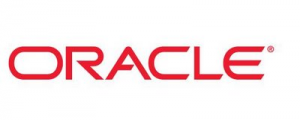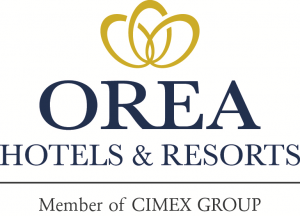CMS M&A Study: stronger negotiating position for sellers in CEE
20.03.2013Company: CMS
CMS M&A Study: stronger negotiating position for sellers in CEE (sellers avoid warranty claims by negotiating shorter limitation periods, lower liability caps and de minimis provisions; buyers in CEE looking for limitation of risk: increase in MAC clauses and purchase price adjustments; sellers want price certainty and insist on locked-box mechanisms where possible; buyers remain cautious: more thorough due diligence and continued interest in Warranty & Indemnity Insurance)
Sellers in M&A transactions are recovering some of their negotiating power with buyers and are able to agree on more favourable terms than in previous years of the financial crisis. According to CMS’ fifth annual M&A Study, based on 1700 deals done between 2007-2012, sellers in CEE are successfully managing to limit their liability under warranty claims. That being said, compared to the rest of Europe, buyers in the region are still managing to insist on terms such as Material Adverse Change clauses and Purchase Price Adjustment mechanisms in order to reduce their risk.
The economy is often characterised as either a buyer's or a seller's market based on the relative acquisition price that is being paid for a target company. But really price isn't everything. The actual strength of either side's negotiation position is expressed through several other indicators, including a number of significant clauses in the share purchase agreement (“SPA”). These terms - such as Material Adverse Conditions and Purchase Price Adjustment clauses or Liability Limitation - can be negotiated in favour of either party.
Helen Rodwell, managing partner of the CMS office in Prague, comments, “2012 was another uncertain year in which global M&A activity flatlined – with the total deal value almost exactly the same as in 2011. Despite the challenges of finding potential purchasers in today’s market, once sellers have done so, they tend to get a good deal in terms of risk allocation. The improvement of the seller’s position can be partly explained by the high quality of a lot of the assets that are the subject of successful deals at the moment, resulting in a healthy level of competition among the potential buyers.”
Limitation of seller’s liability
As was reported in last year’s CMS M&A Study, sellers across Europe continue to be more successful in limiting their liability – a trend which started towards the end of 2009. In 2012, 54% of sellers were able to limit their liability to 50% or less of the purchase price. This compares with 52% in 2011 and only 45% in 2010. The message remains clear – sellers are doing a good job at limiting their overall financial liability. In CEE, liability caps exceeding 50% of the total purchase price have decreased from 64% in 2011 to only 39% in 2012, the second lowest percentage in Europe after France.
Most of the deals across Europe contained a general limitation period of at least 12 months for warranty claims. Limitation periods of 12 to 24 months became standard in 2012. As in 2011, also in 2012 a limitation period of 18 to 24 months was used most frequently, followed by a limitation period of 12 to 18 months. CEE is no different to this trend and witnessed a decrease in agreements with a limitation period over 24 months (down from 35% to 29%) and a minor increase in a limitation periods between 6 and 12 months (10% to 12%)
Not only are liability periods likely to be shorter and overall liability capped, there is also a sharp increase in de minimis provisions which require a buyer’s claim to be of a certain minimum value before the seller is liable to pay compensation. The likelihood of such seller-friendly term in an agreement in CEE increased from 51% to 83%.
Purchase Price Adjustments
A buyer-friendly trend in CEE that bucks the European development is the increase in Purchase Price Adjustment mechanisms. Although a Purchase Price Adjustment can be in favour of both buyer and seller, it is most frequently insisted on by buyers that want to reduce the risk of the target company losing value between the signing and closing of the transaction. While in most European markets there was a decrease in the use of this mechanism, it gained in popularity in CEE, where its use increased from 54% to 66%.
Increase in use of locked-box mechanism
Of those transactions that do not include a Purchase Price Adjustment, there is an increased use of a so-called locked-box clause, which creates certainty for the seller by agreeing a fixed price calculated using a recent historical balance sheet of the target prepared before the date of signing of the sale and purchase agreement. The frequency of such a clause being present in an SPA in CEE increased from 20% in 2011 to 50% in 2012.
A possible explanation for this increase is that there were more financial or private equity sellers in 2012 who traditionally favour this type of mechanism. A locked-box clause requires the buyer to do a thorough financial due diligence of the target company.
Material Adverse Conditions Clause
Material Adverse Change (MAC) clauses give the buyer the right to terminate the agreement if a specific event (defined in the agreement) which has negative impact on the target business occurs before closing. Across Europe, MAC clauses were used in 14% of all deals, reflecting a slight decrease compared with the period 2007 – 2011 (17%). However, contrary to the overall trend in Europe deals in CEE have witnessed an increase of MAC clauses with currently 32% of SPAs containing one.
Warranty & Indemnity Insurance
Warranty & Indemnity Insurance has been available for many years, but has recently become accepted as a real solution for bridging gaps in M&A transactions. Such insurance provides a solution for the ‘warranty gap’ where sellers are not prepared to or in some cases unable to give the warranty and/or indemnity coverage requested by a buyer. The product is particularly attractive to financial sellers in controlled auction processes. They are unwilling to provide warranties and indemnities, but can provide a package to prospective buyers which will enable them to make warranty claims against the insurer rather than the seller. The insurance was either taken out or actively contemplated in 8% of transactions in Europe. Given that many transactions will not give rise to material concern about the ‘warranty gap’, this is a significant statistic which suggests that W & I insurance is very much part of the landscape for European M&A transactions.
More information on the study can be found at: www.cmslegal.com
For further information, please contact:
Erik Werkman
T +420 296 798 701
E erik.werkman@cms-cmck.com







